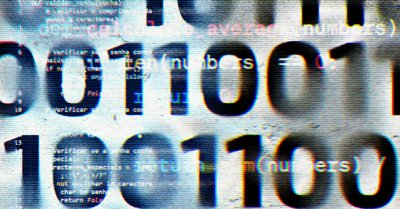AI-Powered Ransomware: The Dawn of a New Era in Cybercrime
@devadigax27 Aug 2025

The world of cybersecurity is bracing for a new era of sophisticated and potentially devastating attacks. Recent research has unveiled a disturbing trend: cybercriminals are leveraging the power of generative AI tools to create and deploy ransomware, marking a significant escalation in the threat landscape. This isn't just about automation; it’s about the ability to create more potent, adaptable, and harder-to-detect malware, ushering in a new chapter in the ongoing battle against cybercrime.
The traditional ransomware model often involved relatively simple code, deployed through phishing emails or exploited vulnerabilities. However, the integration of generative AI allows attackers to create highly customized and targeted ransomware. This means malware capable of adapting to different systems, evading traditional security measures, and even personalizing ransom notes for maximum impact.
The use of AI extends beyond the creation of the malware itself. Generative AI models can be used to craft convincing phishing emails, social engineering campaigns, and other forms of attack vectors. By generating realistic and personalized communications, attackers can increase the likelihood of their targets falling victim to their schemes. This is particularly concerning given the advancements in natural language processing (NLP) and the ability of these models to generate human-quality text.
Furthermore, the very nature of generative AI makes it difficult to attribute attacks to specific actors. The anonymity and decentralized nature of these tools allow attackers to obscure their origins, making it harder for law enforcement and security professionals to track and prosecute them. This obfuscation complicates the process of identifying patterns, developing effective countermeasures, and holding perpetrators accountable.
The implications are far-reaching. Businesses, governments, and individuals are all vulnerable. Critical infrastructure, healthcare systems, and financial institutions face a heightened risk of sophisticated attacks that could lead to significant disruptions and financial losses. The ability of AI-generated ransomware to adapt and evolve quickly makes it a particularly formidable threat. Traditional signature-based antivirus software might struggle to keep pace, demanding a shift towards more advanced detection methods.
This shift necessitates a proactive approach from all stakeholders. Security firms need to develop and deploy AI-powered defense mechanisms that can effectively detect and counter the evolving threats. This might involve the use of machine learning algorithms to identify patterns in malicious code, behavioral analysis to detect anomalies, and sophisticated sandboxing techniques to isolate and analyze suspect files.
Government agencies must collaborate internationally to share information, develop legal frameworks to combat AI-enabled cybercrime, and invest in research and development of advanced cybersecurity technologies. Increased investment in cybersecurity education and awareness programs is also critical, as end-users remain a crucial link in the chain of defense.
The integration of generative AI into the world of ransomware is not simply an evolution; it's a revolution. It represents a significant leap in the capabilities of cybercriminals, demanding a similarly significant leap in the sophistication of our defensive strategies. The future of cybersecurity will be defined by the ongoing arms race between those who develop and deploy these technologies, and those who strive to protect against them. The challenge is clear: we need to outsmart the AI-powered criminals, or risk facing a future dominated by sophisticated, AI-driven ransomware attacks.
The discovery of AI-generated ransomware is a stark reminder that the technological advancements intended to benefit society can be easily weaponized by malicious actors. This necessitates a multi-pronged approach, encompassing technological innovation, robust legal frameworks, and a globally coordinated effort to combat this growing threat. Ignoring the implications would be a grave mistake, potentially leading to widespread disruption and irreparable damage. The time for decisive action is now.
The traditional ransomware model often involved relatively simple code, deployed through phishing emails or exploited vulnerabilities. However, the integration of generative AI allows attackers to create highly customized and targeted ransomware. This means malware capable of adapting to different systems, evading traditional security measures, and even personalizing ransom notes for maximum impact.
The use of AI extends beyond the creation of the malware itself. Generative AI models can be used to craft convincing phishing emails, social engineering campaigns, and other forms of attack vectors. By generating realistic and personalized communications, attackers can increase the likelihood of their targets falling victim to their schemes. This is particularly concerning given the advancements in natural language processing (NLP) and the ability of these models to generate human-quality text.
Furthermore, the very nature of generative AI makes it difficult to attribute attacks to specific actors. The anonymity and decentralized nature of these tools allow attackers to obscure their origins, making it harder for law enforcement and security professionals to track and prosecute them. This obfuscation complicates the process of identifying patterns, developing effective countermeasures, and holding perpetrators accountable.
The implications are far-reaching. Businesses, governments, and individuals are all vulnerable. Critical infrastructure, healthcare systems, and financial institutions face a heightened risk of sophisticated attacks that could lead to significant disruptions and financial losses. The ability of AI-generated ransomware to adapt and evolve quickly makes it a particularly formidable threat. Traditional signature-based antivirus software might struggle to keep pace, demanding a shift towards more advanced detection methods.
This shift necessitates a proactive approach from all stakeholders. Security firms need to develop and deploy AI-powered defense mechanisms that can effectively detect and counter the evolving threats. This might involve the use of machine learning algorithms to identify patterns in malicious code, behavioral analysis to detect anomalies, and sophisticated sandboxing techniques to isolate and analyze suspect files.
Government agencies must collaborate internationally to share information, develop legal frameworks to combat AI-enabled cybercrime, and invest in research and development of advanced cybersecurity technologies. Increased investment in cybersecurity education and awareness programs is also critical, as end-users remain a crucial link in the chain of defense.
The integration of generative AI into the world of ransomware is not simply an evolution; it's a revolution. It represents a significant leap in the capabilities of cybercriminals, demanding a similarly significant leap in the sophistication of our defensive strategies. The future of cybersecurity will be defined by the ongoing arms race between those who develop and deploy these technologies, and those who strive to protect against them. The challenge is clear: we need to outsmart the AI-powered criminals, or risk facing a future dominated by sophisticated, AI-driven ransomware attacks.
The discovery of AI-generated ransomware is a stark reminder that the technological advancements intended to benefit society can be easily weaponized by malicious actors. This necessitates a multi-pronged approach, encompassing technological innovation, robust legal frameworks, and a globally coordinated effort to combat this growing threat. Ignoring the implications would be a grave mistake, potentially leading to widespread disruption and irreparable damage. The time for decisive action is now.
Comments
Related News

Beyond the Mic: Instagram Denies Eavesdropping, But AI's Predictive Power Redefines Digital Privacy
@devadigax | 01 Oct 2025
@devadigax | 01 Oct 2025

Microsoft 365 Premium Redefines AI Productivity, Bundling Copilot to Rival ChatGPT Plus Pricing
@devadigax | 01 Oct 2025
@devadigax | 01 Oct 2025

Wikimedia's Grand Vision: Unlocking Its Vast Data Universe for Smarter Discovery by Humans and AI
@devadigax | 30 Sep 2025
@devadigax | 30 Sep 2025

Google Drive Fortifies Defenses with New AI-Powered Ransomware Detection
@devadigax | 29 Sep 2025
@devadigax | 29 Sep 2025

The DeepSeek Phenomenon: Unpacking the Viral AI Chatbot from a Leading Chinese Lab
@devadigax | 29 Sep 2025
@devadigax | 29 Sep 2025
 AI Tool Buzz
AI Tool Buzz